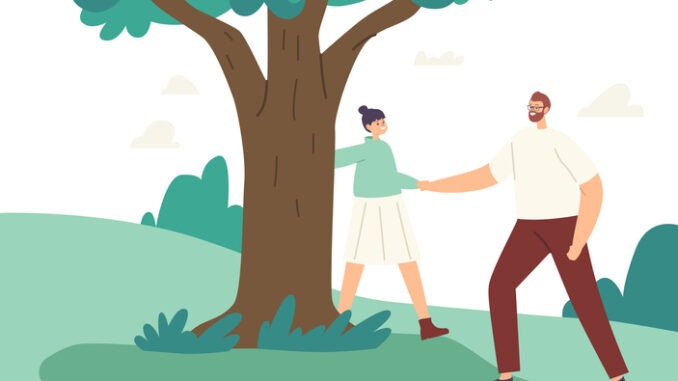
Do you need a breather? Try these tips to connect with the natural world to promote better mental health
CREDIT: This is an edited version of an article that originally appeared on Happiful
There’s a reason people say to ‘take a walk on the wild side of life’ – spending time outside can increase our intake of vitamin D, as well as reducing blood pressure, muscle tension, and the production of stress hormones; nature is unequivocally good for our bodies.
However, the benefits go beyond the physical; there can be a variety of mental and emotional reasons for wanting to step outside. Perhaps you seek the mental clarity of having green space around you, or the grounding effect of feeling your two feet firmly on the earth. It can feel like quite a personal thing – what we seek from nature – and, perhaps, what you look to gain from the natural world changes each time you enter it.
So, how can we develop our connection with the natural world?
If you’re going to be in nature, be in nature
In our busy lives there can be a temptation to make our journeys as quick and time-efficient as possible; this might mean checking your emails while walking the dog, or catching up on a podcast on your cycle to work. Of course, productivity has its place – but could you benefit from completely switching off, once in a while, and just being in the moment?
Why not go for a walk and leave your ‘phone at home, or at least put it on airplane mode? This can help you tune out from a busy day, enabling you to focus on the present and notice what’s around you; the sights, sounds and smells.
Involve all your senses
Talking of sights, sounds and smells, our senses are key tools in connecting to the natural world. One way to utilise them is to try the five, four, three, two, one grounding technique the next time you go out. Look around you, focus, and slowly take in your surroundings. Try to identify:
- Five things you can see – the smaller the detail, the better.
- Four things you can touch – it could be grass or a tree if you’re in a park, or maybe sand and water if you’re at the beach. What do they feel like?
- Three things you can hear – birds, rain, wind. How nearby or distant are the sounds?
- Two things you can smell – a bonfire, freshly cut grass, or the smell of rain on the pavement. Research shows that exposing your lungs to fresh air can help to relieve stress and anxiety so be sure to take a deep breath.
- One thing you can taste – you might find that you have to use your imagination for this element.
Seek out nature in your online consumption
Getting outside is the obvious way to connect to nature, but it’s not all about the great outdoors. There are ways to access nature from inside your home – and even while you’re watching TV or on your ‘phone. In fact, research shows that viewing photos and videos of nature online can impact our emotions just as much as being outside.
In a study by BBC Earth participants who watched just a few minutes of Planet Earth felt 46% more awe, and 31% more gratitude, than participants who watched other types of TV programmes. The research suggests that even brief engagement with nature content can lead to significant increases in positive emotions, including contentedness, joy and amusement. So, the next time you’re stuck for something to watch, opt for a programme about the natural world (extra points if it’s presented by Sir David Attenborough!) or start following some inspirational accounts on social media, and turn your time scrolling into an experience of wonderment of the natural world.
Some of our favourite Instagram accounts are @bbcearth, @forestryengland, and@earth.
Engage with wildlife
Call us biased, but one of the best things about the natural world has to be the animal kingdom. If you’ve got a pet be sure to make time for play, or to spend time in their company; not only will this benefit you, it’s also great for their sense of wellbeing too.
If you haven’t got a pet, there are plenty of other ways to access the magic of wildlife. You could set up a birdfeeder and keep an eye out for robins in your garden, or even watch out for pigeons in your local town. Birdwatching is renowned for its mindful benefits but, if you’re not a fan of birds, there are many creatures you can look out for, and take more notice of – be it squirrels or bees.
For more information about the benefits of nurturing local wildlife, and to find a nature reserve near you, or to volunteer for a conservation project, visit wildlifetrusts.org.
Be inspired to get creative
Many people find that nature inspires them to create – for example, through painting, drawing, photography or writing. There’s so much out there just waiting to be our source of creativity, from vibrant and fiery autumnal leaves, to the crunch of frost underfoot on a cold winter morning.
Creative activities offer their own wellbeing benefits as they give us a chance to develop hobbies and flex our artistic muscles – so there’s even more reason to combine creativity with our natural environment!
When you next go for a walk why not go with the intention of capturing your surroundings? You could take photos of five moments of natural beauty. Or you could try your hand at creative writing, noting down some sentences about what you experienced.


Be the first to comment